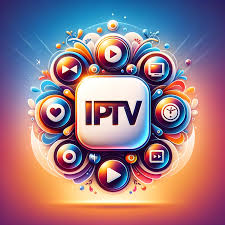
In recent years, Internet Protocol Television (IPTV) has emerged as a revolutionary technology, reshaping how we consume television and multimedia content. Unlike traditional broadcast or cable television, IPTV leverages internet protocols to deliver a wide range of content directly to users’ devices, offering greater flexibility, interactivity, and iptv france. This article delves into the world of IPTV, exploring its technology, benefits, challenges, and the impact it’s having on the media landscape.
Understanding IPTV
IPTV refers to the delivery of television content over Internet Protocol (IP) networks. Instead of relying on traditional methods like satellite or cable, IPTV uses broadband internet connections to transmit video, audio, and other multimedia content to viewers. This enables a more dynamic viewing experience, where users can access content on-demand, pause and rewind live broadcasts, and interact with services like video-on-demand (VOD) and digital video recording (DVR).
Technology Behind IPTV
The backbone of IPTV involves several key technologies:
- IP Network Infrastructure: IPTV relies on robust IP-based networks, typically broadband connections such as DSL, fiber-optic, or cable internet. These networks ensure high-speed data transmission, essential for delivering high-quality video and audio streams.
- Content Delivery Systems: IPTV platforms employ specialized servers and software to manage and deliver content efficiently. Content providers encode video streams into digital formats compatible with IP networks, ensuring seamless transmission to end-user devices.
- Middleware and User Interface: Middleware systems enable interactive features and user interfaces for navigating IPTV services. These interfaces vary from simple channel guides to sophisticated applications supporting VOD libraries, interactive advertising, and personalized recommendations.
Benefits of IPTV
IPTV offers several advantages over traditional television services:
- Greater Flexibility: Users can access IPTV content on a variety of devices, including smart TVs, smartphones, tablets, and computers, allowing for viewing anytime, anywhere with an internet connection.
- Enhanced Interactivity: IPTV supports interactive features such as VOD, DVR functionality, and two-way communication, enabling viewers to engage more deeply with content.
- Personalized Content: Through data analytics and user preferences, IPTV services can tailor recommendations and content suggestions, creating a personalized viewing experience.
- Cost Efficiency: IPTV often provides competitive pricing models compared to traditional cable or satellite TV services, potentially saving consumers money.
Challenges and Considerations
While IPTV presents compelling benefits, it also faces challenges:
- Bandwidth Requirements: High-definition (HD) and ultra-high-definition (UHD) content demand significant bandwidth, which can strain network resources, particularly in areas with limited internet infrastructure.
- Content Licensing and Distribution: Securing rights to distribute content over IPTV platforms can be complex and varies by region, impacting the availability of certain channels or programs.
- Security Concerns: Protecting IPTV content from piracy and unauthorized access is critical. Effective digital rights management (DRM) and encryption technologies are essential to safeguarding content integrity.
Impact on Media Landscape
IPTV is reshaping how media companies deliver and monetize content. It enables broadcasters and content providers to reach global audiences more efficiently, bypassing geographical constraints and offering niche content tailored to specific demographics. Moreover, IPTV fosters innovation in advertising models, data analytics, and viewer engagement strategies, driving new revenue streams for stakeholders across the media ecosystem.
Conclusion
As IPTV continues to evolve, its influence on the television and media industry is undeniable. By harnessing the power of internet protocols, IPTV empowers consumers with unprecedented access, interactivity, and personalization in their viewing experiences. While facing technological and regulatory challenges, IPTV’s transformative potential ensures it will remain a cornerstone of modern media consumption, paving the way for a more dynamic and interconnected future of television.